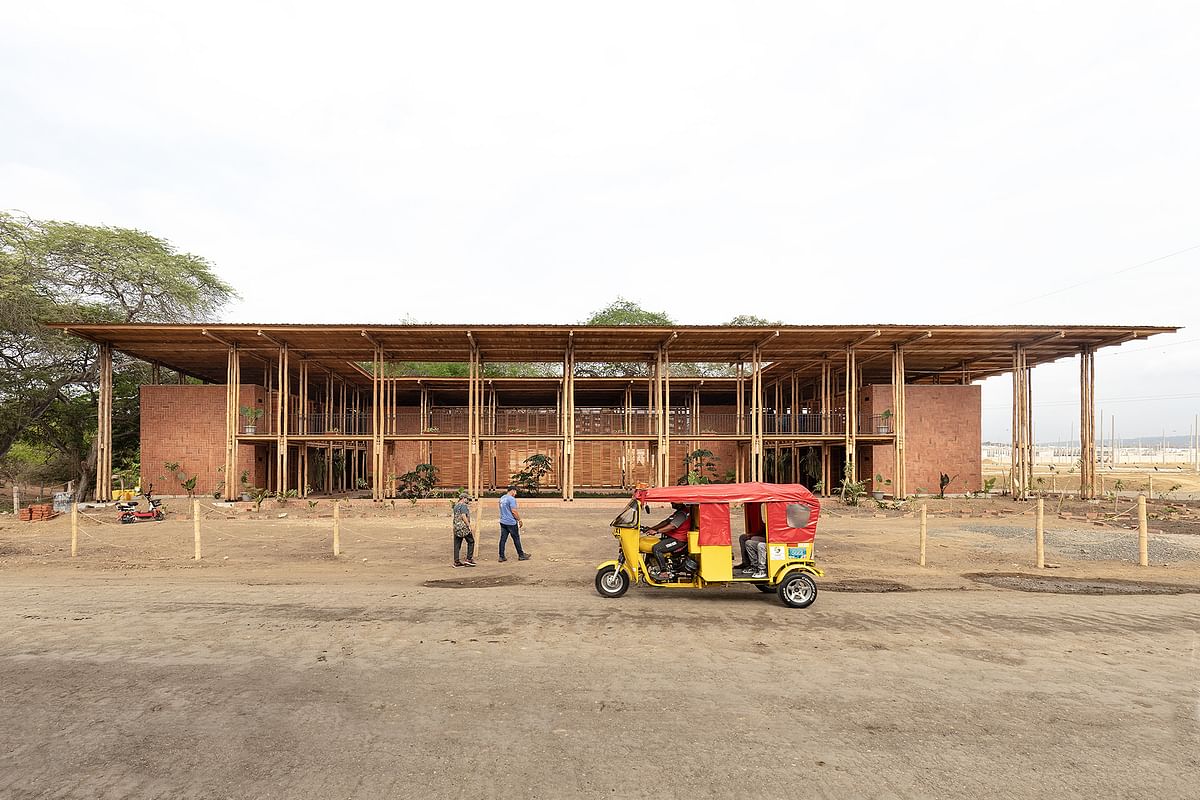Four Latin American practices go head-to-head as MCHAP.emerge finalists
The Mies Crown Hall Americas Prize's latest MCHAP.emerge award program has selected four finalists ahead of next month's Conference on Critical Practice at the Illinois Institute of Technology. Each features a host of interesting design solutions while addressing the social needs of communities in Buenos Aires, Mexico City, and two rural villages in Peru and Ecuador. "The finalists for the MCHAP Prize for Emerging Practice illustrate both a strong community-driven orientation and innovative architectural insertions into the everyday urban fabric of cities," noted jury chair and new Harvard GSD faculty member Maurice Cox. "They are characterized by an increased interest in the idea of architecture as a prototype, characterized by a keen sense in the economy of means through frugal yet expressive use of locally resourced materials and methods."The announcement of the fifth prize cycle's finalists follows the recent selection of 53 Most Outstanding Projects winners and 219 Mies Crown Hall Americas Prize nominees. A winner will be announced at the culmination of the conference on Friday, September 27th. The four finalists are:(cover photo) Community Productivo Center Las Tejedoras by Natura Futura in Chongón, Guayas, Ecuador Primary authors: José Fernando Gómez Marmolejo (Designer, Founder of Natura Futura), Juan Carlos Bamba (Designer, founder of Juan Carlos Bamba)Author's description: "The project was seeking to be an integrative space for a big group of seawing womens that, until then, were not able to develop their productive activities in a proper space that could express their identity and desires in a sustainable way. This is how, patio with endemic vegetation is proposed as a meeting and exhibition place that is contained by two side naves and a central one; one contains theoretical training classrooms, cafeteria and hygienic services; the other, practical learning workshops, sleeping space, warehouses and a store to sell the products developed in the central nave where the artisan fabrics are made and sold. The main front is a production-exhibition gallery that acts as a filter for the patio and as an element to generate urbanity towards the street. Teak wood, traditionally used as a structure of the old stilt houses around the area, is used for the main structure. For the wall, local bricks were used, presenting a herringbone pattern which are stiffened by the very shape of the interlocked walls. For the natural illumination and ventilation wooden folding lattice doors are used to control them, working also as a link between the exterior and interior. This, focused on a low energetic consumption, having in mind the high humidity and temperatures in the area."Housing Building on Virrey Avilés Street by Juan Campanini-Josefina Sposito in Buenos Aires, ArgentinaPrimary authors: Josefina Sposito (Project Design and Management), Juan Andrés Campanini (Project Design and Management)Read the full post on Bustler


The Mies Crown Hall Americas Prize's latest MCHAP.emerge award program has selected four finalists ahead of next month's Conference on Critical Practice at the Illinois Institute of Technology. Each features a host of interesting design solutions while addressing the social needs of communities in Buenos Aires, Mexico City, and two rural villages in Peru and Ecuador.
"The finalists for the MCHAP Prize for Emerging Practice illustrate both a strong community-driven orientation and innovative architectural insertions into the everyday urban fabric of cities," noted jury chair and new Harvard GSD faculty member Maurice Cox. "They are characterized by an increased interest in the idea of architecture as a prototype, characterized by a keen sense in the economy of means through frugal yet expressive use of locally resourced materials and methods."
The announcement of the fifth prize cycle's finalists follows the recent selection of 53 Most Outstanding Projects winners and 219 Mies Crown Hall Americas Prize nominees. A winner will be announced at the culmination of the conference on Friday, September 27th.
The four finalists are:(cover photo) Community Productivo Center Las Tejedoras by Natura Futura in Chongón, Guayas, Ecuador
Primary authors: José Fernando Gómez Marmolejo (Designer, Founder of Natura Futura), Juan Carlos Bamba (Designer, founder of Juan Carlos Bamba)
Author's description: "The project was seeking to be an integrative space for a big group of seawing womens that, until then, were not able to develop their productive activities in a proper space that could express their identity and desires in a sustainable way. This is how, patio with endemic vegetation is proposed as a meeting and exhibition place that is contained by two side naves and a central one; one contains theoretical training classrooms, cafeteria and hygienic services; the other, practical learning workshops, sleeping space, warehouses and a store to sell the products developed in the central nave where the artisan fabrics are made and sold. The main front is a production-exhibition gallery that acts as a filter for the patio and as an element to generate urbanity towards the street. Teak wood, traditionally used as a structure of the old stilt houses around the area, is used for the main structure. For the wall, local bricks were used, presenting a herringbone pattern which are stiffened by the very shape of the interlocked walls. For the natural illumination and ventilation wooden folding lattice doors are used to control them, working also as a link between the exterior and interior. This, focused on a low energetic consumption, having in mind the high humidity and temperatures in the area."
Housing Building on Virrey Avilés Street by Juan Campanini-Josefina Sposito in Buenos Aires, Argentina
Primary authors: Josefina Sposito (Project Design and Management), Juan Andrés Campanini (Project Design and
Management)Read the full post on Bustler
